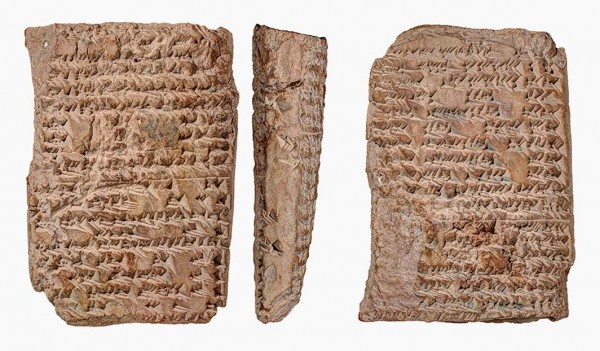ishtartv.com - ancient-origins.net
24 FEBRUARY, 2019
Archaeologists studying a group of five unique stone tablets dating to the first millennium in Babylonia and Assyria have announced that they reveal a hitherto unknown level of astronomical understanding.
Events and appearances in the night sky have been recorded for thousands of years. Following the solar and lunar cycles allowed people to predict seasonal change which enhanced outdoor survival. But in Ancient Mesopotamia, however, new evidence proves that sky watching was taken to a whole new level of complexity. It has been found that both observational astronomy and interpretive astrology were central practices not only in
time
keeping
, but also in religious practices and the structure of ritual and ceremonial calendars.
This collection of tablets is providing scientists with what is being called “the earliest prose descriptions of the celestial constellation.
” According to a report in Yale News, all of these tablets are currently being studied in the Yale University Babylonian Collection. “Three of them [tablets] were discovered in the sacred city of Uruk in southern Iraq and four of the tablets are newly discovered” and all were written in cuneiform script and in the Babylonian language.
Detailed images, copies and translations of these astronomical tablets have been assembled in a new book called The Cuneiform Uranology Texts: Drawing the Constellations, co-authored by Frahm, Paul-Alain Beaulieu, Wayne Horowitz, and John Steele. The name “Uranology” is the word used by the ancient Greeks to describe the study of the sky.
What Do the Tablets Tell Us About Ancient Sky Watching?
Yale Assyriologist Eckart Frahm said stars and other heavenly bodies were worshipped as deities and “The ancient stargazers were so intrigued by the mechanics of the heavens - and the possibility of being able to make predictions from what they saw in the night sky - that, from the 8th century to the 1st century BC, they observed very closely on a daily basis the movements of the stars to determine what exactly was happening in the sky, and documented these observations on clay tablets.”

A “uranology” tablet from the Yale Babylonian Collection, written between the 3rd and 2nd centuries BCE in the city of Uruk in southern Iraq, provides on the right side a description of celestial constellations and on the other left side the topography of the city of Uruk. (Photo credit: Klaus Wagensonner)

Medieval stargazers. People have been fascinated by the stars and their possible influence over our lives, long before and after the time of Babylonian astrology (Source: Hawkwood/ CC BY NC ND 2.0)
|